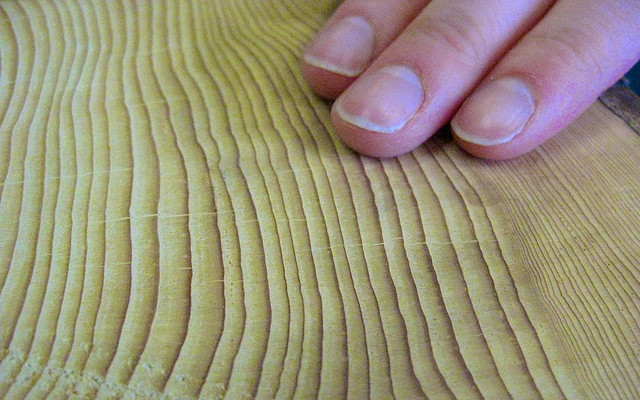
<a href="http://www.flickr.com/photos/scottstgeorge/3354949324/">Scott St.George</a>/Flickr
Precipitation, elevation, and even cloud-cover affect tree ring growth, but now there’s another factor for scientists to consider: sheep. A new (ewe?) study out of Norway shows that the number of livestock in an area affect tree rings more than temperature.
The study compared 206 birch trees growing in Norway for 9 years at three different levels of sheep density: no sheep, 25 sheep per square kilometer, and 80 sheep per square kilometer. Researchers found that the more sheep around, the slimmer the tree rings. Trees that grew up in a sheep-less environment had rings three times wider than the trees that grew up around the most sheep.
This isn’t to say that all tree ring data used to estimate past climatic conditions is invalid, but it is another element to factor in. Study lead author James Speed said, “Our study highlights that other factors interact with climate to affect tree rings, and that to increase the accuracy of the tree ring record to estimate past climatic conditions, you need to take into account the history of wild and domestic herbivores. The good news is that past densities of herbivores can be estimated from historic records, and from the fossilised remains of spores from fungi that live on dung.”
So, basically, next step: study shrooms that grew on sheep poop centuries ago. Sounds exciting. Until then, the sheep study will likely give fuel to those who maintain that tree ring data are not a reliable indicator of climatic history, despite the fact that scientists also use things like coral records and ice cores to estimate past temperature changes. As Mother Jones has reported in the past, sometimes the controversy has come from very particular tree ring data sets calculated in scientifically unsound ways. If nothing else, this study involving sheep has uncovered a way to make tree ring data more accurate. Whether climate skeptics will see this as a positive or a negative is up for debate.











